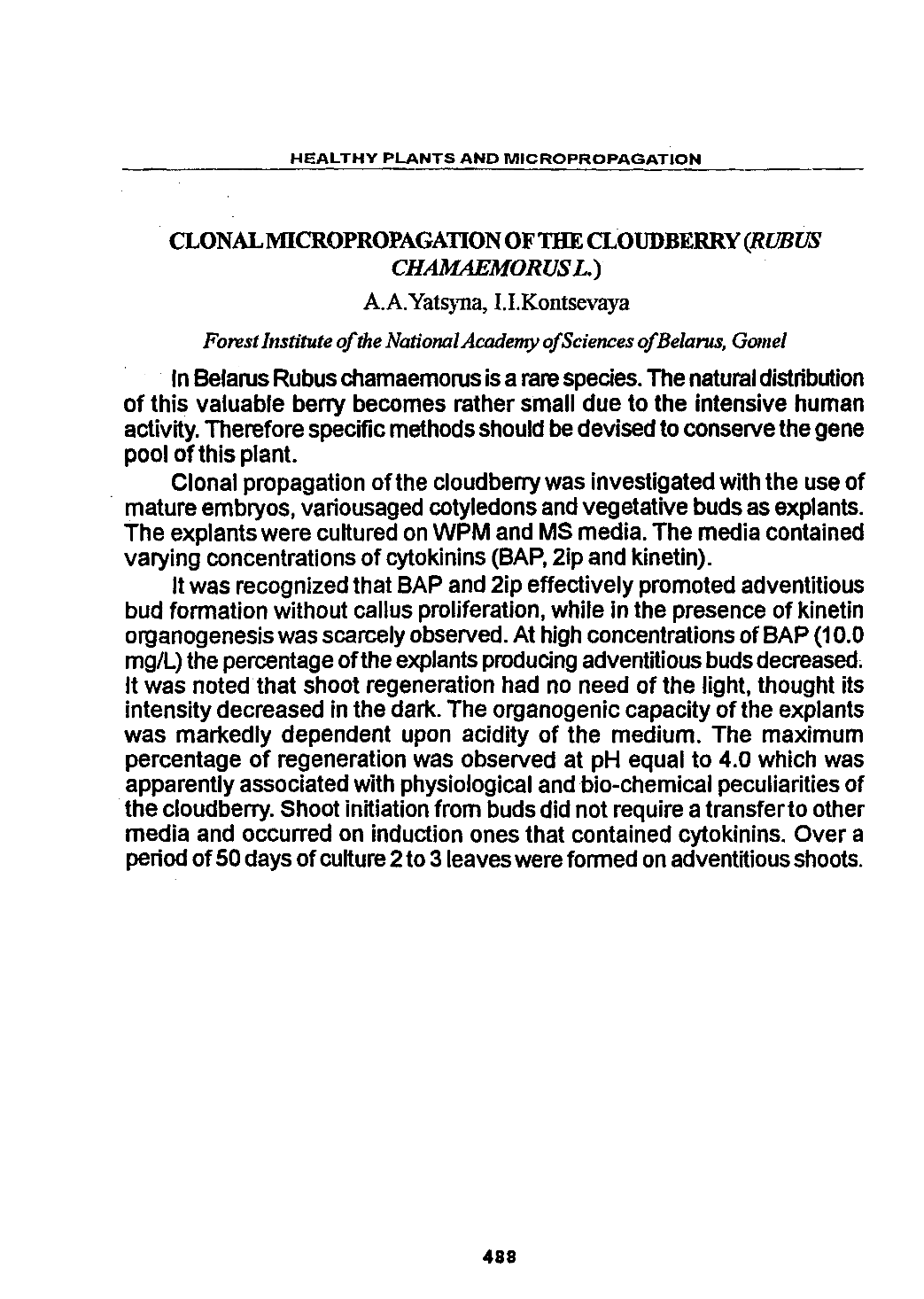

H E A L T H Y P L A N T S A N D M IC R O P R O P A G A T IO N
CLONALMICROPROPAGATIONOFTHECLOUDBERRY
(RUBUS
CHAMAEMORUS L.)
A.A.Yatsyna, I.I.Kontsevaya
Forest Institute o f the NationalAcademy o fSciences o f Belarus, Gomel
In Belarus Rubus chamaemorus is a rare species. The natural distribution
o f this valuable berry becomes rather small due to the intensive human
activity. Therefore specific methods should be devised to conserve the gene
pool o f this plant.
C lonal propagation o f the cloudberry was investigated w ith the use o f
mature embryos, variousaged cotyledons and vegetative buds as explants.
The explants were cultured on WPM and MS media. The media contained
varying concentrations o f cytokinins (BAP, 2ip and kinetin).
It was recognized that BAP and 2ip effectively promoted adventitious
bud formation w ithout callus proliferation, while in the presence of kinetin
organogenesis was scarcely observed. A t high concentrations of BAP (10.0
mg/L) the percentage o f the explants producing adventitious buds decreased.
It was noted that shoot regeneration had no need o f the light, thought its
intensity decreased in the dark. The organogenic capacity o f the explants
was markedly dependent upon acidity o f the medium . The maximum
percentage o f regeneration was observed at pH equal to 4.0 which was
apparently associated with physiological and bio-chem ical peculiarities of
the cloudberry. Shoot initiation from buds did not require a transfer to other
media and occurred on induction ones that contained cytokinins. Over a
period o f 50 days of culture 2 to 3 leaves were formed on adventitious shoots.
488
Научная электронная библиотека ЦНСХБ









